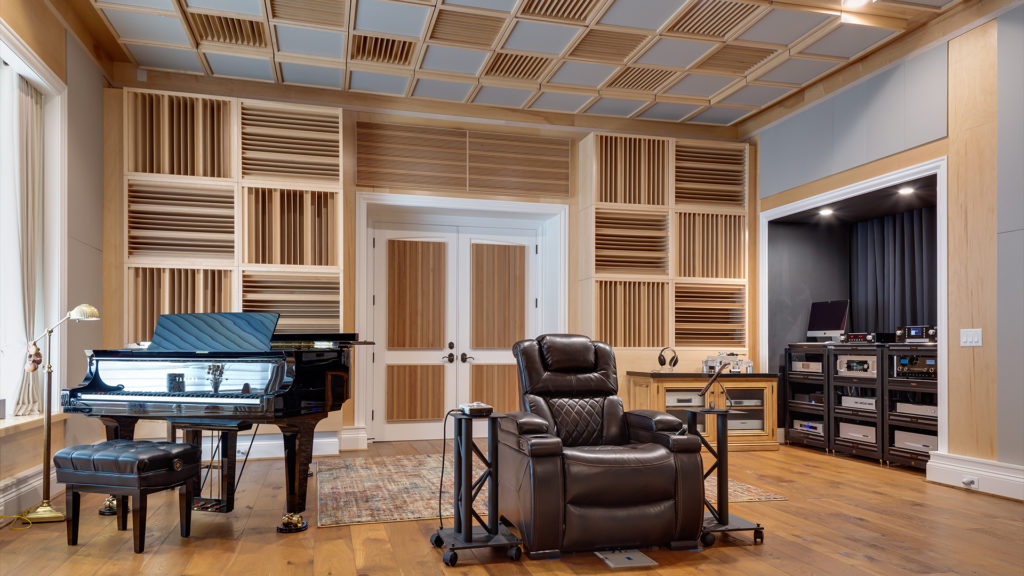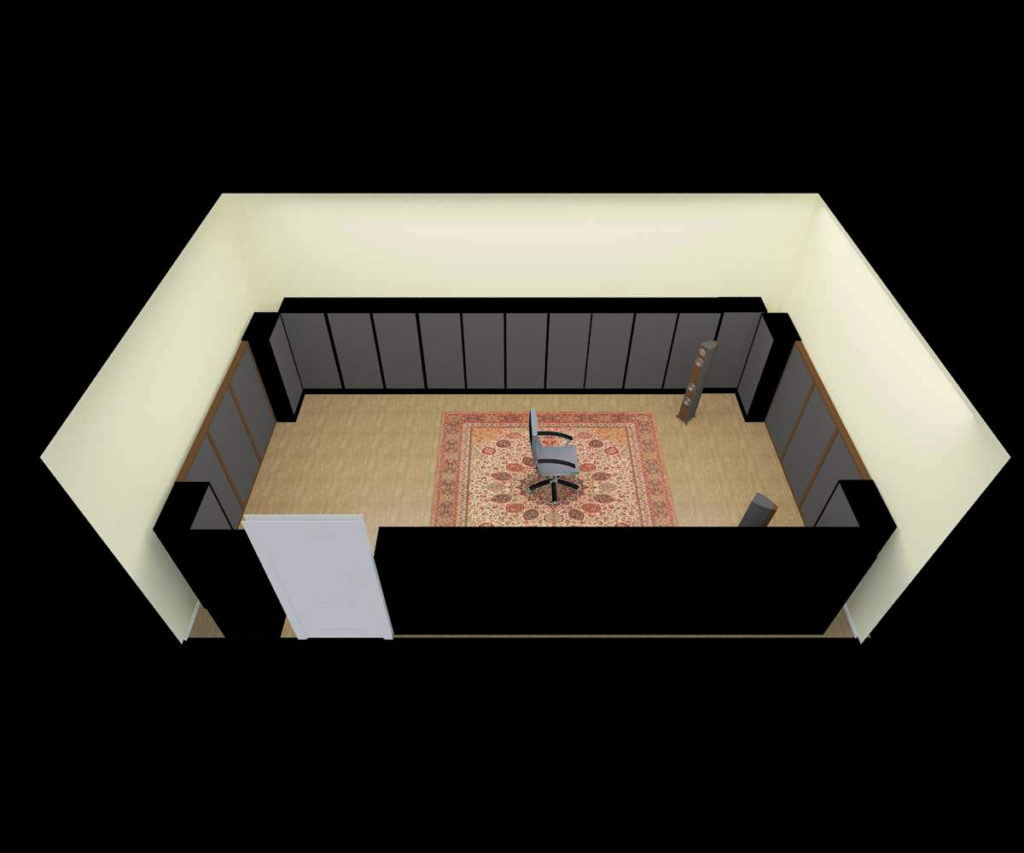
At Acoustic Fields, we take sound seriously. We do not fill boxes with building insulation and call them bass traps. Building insulation was never designed as an acoustical tool. It was designed to keep your room warm and cool. Most people take the cheap way out when they are trying to treat their critical listening environments. We believe music and voice are different from noise. Music and voice require special technologies that do not destroy the delicate balances within our voices and music. You must use the proper rates and levels of absorption when you are treating rooms that are using music and voice as the main usage. Our carbon and foam technologies are unique in the acoustic treatment world. Our foam took 8 years and 2 M to create. https://www.acousticfields.com/about/. It was designed specifically for music and voice. It will not keep your room warm or cool. What it will do is to absorb just enough energy to manage the reflections from your wall surfaces and not over absorb destroying the harmonics and emotion of our music. Our carbon technology applies the same philosophy to low frequency energy or “bass”. Engineers tell us that they have to learn to mix the low-end all over again because they hear so much more resolution and detail in their mixes. Let’s look at some things you should do within your critical listening rooms.
In the title picture, we see a room designed for two usages. We have a “live” room where a piano is played in the analog domain. The room i9s also used for two channel listening. We need a room that in the back part where the piano is going to be played will compliment the rear wall of a two channel listening room in the front of the room. With two things going on within one room, care must be taken in choosing the correct acoustical tools. The sound absorption technology for the low-frequencies was built into the walls. Our next issue is how to make the space sound larger for the piano but not be too “large” for the two channel listening room rear wall location. Two dimensional diffusion was chosen based upon prime number 17. Diffusion alternated between vertical and horizontal domains to create a surface area that created a “reflection free soundfield” around the piano. This diffusion array would also compliment the front of the room two channel listening set up. Maple wood was used since wood provides the smoothest response for middle range frequencies in music and voice rooms.

In most small rooms, low-frequency absorption technology must be placed upon all four walls. In professional rooms, we treat the floor and the ceiling. If you want complete control over your room acoustically, you must treat all four walls and also the ceiling and the floor. Walls produce unwanted pressure issues called room modes. http://artsites.ucsc.edu/ems/music/tech_background/TE-02/modes/Modes.htmls that blur and smaer our vocals and music.Have you ever heard the term “bass boom”. From an acoustical treatment perspective you must treat at least 60% of the wall surface area with low-frequency sound absorbing technology as shown in the graphic above. With an 8′ ceiling height, you must treat at least 5′ of that floor to ceiling distance. Sometimes this is not possible. Low-frequency management technology is 12 – 16″ deep and takes up space. With low-frequency management it is all about surface area coverage. It is all about getting enough of the proper rate and level of low-frequency absorption along that wall surface. With the smaller carbon modules you can adjust the height requirements by simply stacking the modules to achieve as much low-frequency absorption as you can when at the same time conforming to other room needs and budget restrictions.

With the carbon low-frequency modules, we can manage the square footage absorption requirements every four square feet. Low-frequency absorption treatment is only one part of the acoustical sonic equation. Once we have addressed the low-frequency issues through diaphragmatic absorption, we can then focus on the middle and high frequencies. Rays of energy like our middle and high frequencies contain our vocals. Human voice is critical. Everyone is familiar with how the human voice sounds to them. They know when it does not sound right. Treating our vocal ranges with absorption to minimize the reflections from the room boundary surfaces must be done carefully. You must not over absorb or the voice will sound dead and flat with no nuance or emotion. If not enough vocal energy is absorbed within the room, the voice will sound bright and without definition or good tone quality. Have you ever sang loudly in the shower? This is not enough absorption.With our smaller carbon modules as a single row on the floor, you now have room for the middle and high frequency treatment requirements. https://www.dictionary.com/browse/reverberation

Remember when I said that is professional rooms, we must treat the four walls and the floor and ceiling. One way to build the low-frequency management into the structure itself is to use our carbon absorbing wall technology. In the picture above you can see our carbon filters installed between the studs. The carbon filters are the structure between the studs that has the pegboard on each side. Between the pegboard, there is our proprietary low-frequency technology. We calculate the frequency and amplitude issues at every wall and floor to ceiling surface area. We calculate the depth of each stud space to create the proper resonant frequency for that room wall location. In North America we have studs that are 16″ on center and have a 14 1/2″ stud space width. This allows us to tune every room mode at that broom boundary surface area every 14 1/2″ floor to ceiling. We adjust the thickness of each filter to match the amplitude of the low-frequency room mode at that wall location. This allows complete control within the wall (diaphragmatic absorber) for every frequency and amplitude of issue. This is why it is so critical to match the usage to the room size and volume. Different usages produce different levels of pressure and that pressure must be treated. https://www.acousticfields.com/carbon-absorber-wall/







